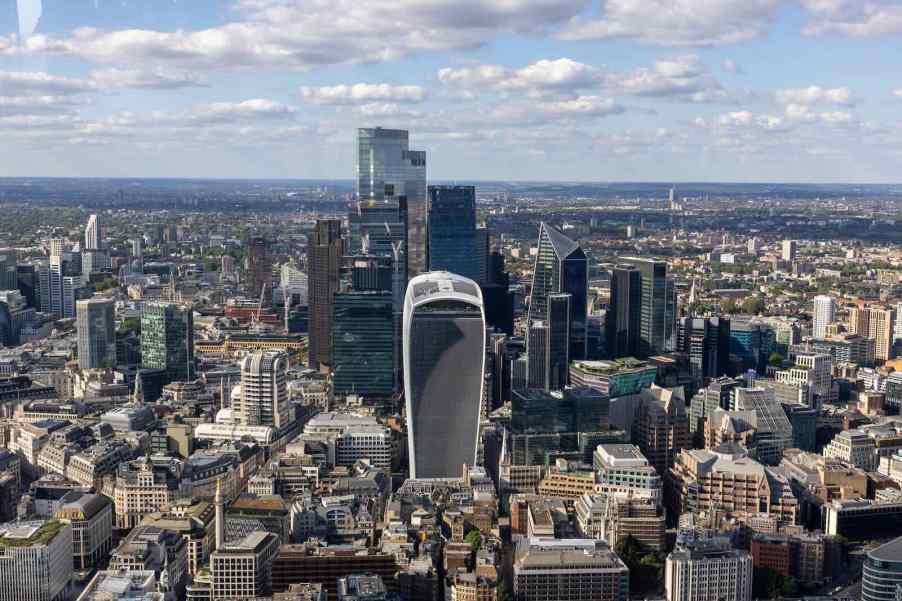
London death ray melted parked cars, ‘Crikey, that’s awful!’
Imagine this: it’s a sunny day in London, and you’ve just parked your gleaming Jaguar XJ, the envy of every passerby. After an errand, you return, keys in hand, ready to slide into that leather seat, but wait—something’s wrong. The closer you get, the more your brain tries to deny what your eyes are seeing. Is that… melted plastic? The once-pristine Jaguar emblem is sagging, the side mirror has lost its form, and the dashboard? It looks like someone left it in a microwave on high for too long. The world spins for a second. Did your car just… roast itself under the London sun? You stand there, trying to wrap your head around how your luxury ride turned into a DIY fondue pot. This isn’t fiction, this actually happened to Londoner Martin Lindsay.
Turns out, Lindsay wasn’t just another unlucky driver; he was the latest victim of Rafael Viñoly’s infamous “death ray.” And no, this isn’t some world conquest plot from a James Bond movie. Viñoly is not a supervillain—he’s an architect. And the death ray was created by a skyscraper he’d built in London. But if you take one look at his track record, you might think he does have nefarious plans. Lindsay’s car wasn’t the only thing the death ray burned. It took out everything from plastic side mirrors to business’ carpets. Tiles cracked. A van melted. Someone even fried an egg and toasted a baguette in the building’s reflected light. You could say this building really brought the heat.
This wasn’t even Viñoly’s first rodeo with a death ray. The first time he sent something to an early grave, it wasn’t in London—it was Las Vegas. But we’ll get to that.
The Walkie Talkie building is the local London nickname for the curved skyscraper at 20 Fenchurch Street. It started melting things almost as soon as construction was wrapping up. The building’s mirrored windows not only reflect the light, its concave shape focuses all 40 stories of sunlight into a single point of the unsuspecting street below. On hot days, that curved glass exterior creates a wandering solar death beam capable of melting whatever is in its path.
Lindsay’s Jaguar XJ was unlucky enough to park in the firing line. When he returned, his car looked like it had been left in the sun for weeks, not minutes. As he told the BBC, “I was walking down the road and saw a photographer taking photos and asked, ‘What’s happening?’ The photographer asked me, ‘Have you seen that car? The owner won’t be happy.’ I said, ‘I am the owner. Crikey, that’s awful.’”
But Lindsay wasn’t the only victim. Eddie Cannon, an air conditioning engineer, found that his van had suffered a similar fate. As he described it, “Every bit of plastic on the left-hand side and everything on the dashboard has melted, including a bottle… that looks like it has been baked.” Sizzler!

Local businesses also got scorched. Tiles cracked under the intense heat, and carpet inside some shops was singed. People were frying eggs on the sidewalk, not for fun, but to prove the building made it possible.
To top it off, Viñoly and his team knew that sunlight might be an issue. They predicted the temperature of the death ray would hit around 36 degrees Celsius (97 degrees Fahrenheit). And they decided that subjecting the peasants on street level to this much heat was well worth a groovy-looking curved skyscraper for the business folks above. Not cool.
But the team was a bit off. Turns out, the temperatures soared to 72 degrees Celsius—that’s a toasty 161 degrees Fahrenheit. In Viñoly’s own words, “When [the problem] was spotted on a second design iteration, we judged the temperature was going to be about 36 degrees [Celsius]… But it’s turned out to be more like 72 degrees [Celsius].”
Oops.
So, how did they fix it? First, they threw up a temporary sunshade to prevent further damage to innocent cars and businesses. But of course the death ray went to work baking the sun shade. Eventually, they installed horizontal aluminum fins all along the south side of the building. These fins broke up the reflection, stopping the light from turning the street into a summer barbecue. The fix dulled the building’s shine from the inside, but hey, at least cars aren’t melting anymore.
But back to Las Vegas. Viñoly should’ve seen this coming. Before the Walkie Talkie roasted London, he designed the Vdara Hotel in Sin City. That building, also concave, created its own “death ray.” Sunlight reflected off its shiny exterior and hit guests lounging by the pool. One man, Bill Pintas, literally ran for his life as the heat singed his hair. When he returned to his chair after escaping the death beam, he found a melted plastic bag that had been sitting next to him.
Viñoly, my man, at this point, it’s safe to say that concave glass buildings are not your thing.
So what’s the takeaway here? Don’t stand in front of a giant glass building when the sun’s out. You might get more than a tan. But beyond that, maybe we should all keep an eye on Rafael Viñoly’s next project. He’s scorched Las Vegas. He’s scorched London. Who knows which city will be next? If you see construction going up and it looks suspiciously concave, my advice? Park far, far away. When the next death ray hits the streets, you won’t want to be in its path.
See the damage wrought by the “Walkie Talkie” building yourself in the video below:



